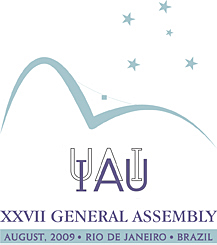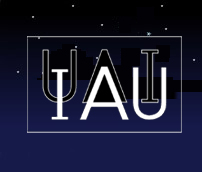Scientific Rationale
All facets of stellar evolution, from star formation to advanced stages of stellar evolution will be impacted by the higher sensitivity and fidelity of the new spectral observations. The analysis of spectral lines leads to the determination of physical parameters of stars and their environments, including the determination of densities, effective temperatures, chemical composition, velocity flows, magnetic fields and excitation mechanisms. IR and sub-mm observations, in particular, are needed for accurate quantitative analysis of:
- Proto-stars and the formation of multiple star systems
- Formation of proto-planetary and debris disks
- Massive star properties and winds
- Probing stellar outer envelopes for mass loss in AGB stars
- Velocity fields for mass outflows and jets from young stars and eruptive variables
- Tests of stellar nucleosynthesis using post-main sequence stars
- Chemical composition studies for cool stars, cold gas, and high excitation, low density plasmas
- Stellar magnetic fields from magnetically sensitive IR spectral lines
- Chemistry and kinematics of red giants and supergiants in metal-rich stellar clusters and galaxy fields
An optimistic outlook on IR astronomy is justified by several developments coming together at this point in time, which will effectively turn IR spectroscopy into a new tool that is considerably more potent than the sum of its parts.
- Evolution of technology relevant to IR and sub-mm spectroscopy is continuing to advance at an impressive rate, resulting in evermore powerful combinations of instruments and detectors. The Spitzer and AKARI IR space observatories and modern high-resolution spectrographs (Phoenix, CRIRES, VISIR, TEXES) operating in the 1-25 micrometer region are cases in point. In the near term several large dedicated facilities on the ground (ALMA), at high altitudes (SOFIA), and in space (Herschel, JWST) will become available, which will significantly enhance the observational capabilities in terms of spatial and spectral resolution, sensitivity and access to wavelength domains.
- Large IR surveys such as UKIDSS and the Spitzer Legacy Programs, or the upcoming VISTA surveys, produce extensive public data sets that can be mined for intriguing objects and follow-up observations with the state-of-the-art instrumentation. For example, large IR surveys (e.g., Gould Belt) are now providing complete samples of young stellar objects in the clouds down to the planetary mass regime, allowing time scales for different evolutionary phases and processes of clustered versus non-clustered star formation to be tested.
- Advances in calibration techniques are removing the need to rely on atmospheric features for wavelength calibration and provide better absolute accuracy for highresolution spectroscopy. In combination with on-going efforts to establish solid standard stars for the IR, this will result in improved wavelength and flux calibration supporting quantitative scientific analysis.
- Excellent facilities in laboratory astrophysics are making significant progress in establishing the fundamental data necessary to provide the required ground truth for the IR domain, covering many aspects of atomic, molecular and solid state physics.
- Additionally, sophisticated modelling of stellar atmospheres and the theory of stellar evolution is providing a more complete picture with which the growing mosaic of observations and measurements can be compared. State-of-the-art database infrastructure is making all such data easily accessible on an unprecedented scale.
- Finally, progress is being made towards better characterizing the properties of Earth's atmosphere and its impact on astronomical observations. Active real-time correction of the seeing through adaptive optics (AO) facilities - also involving laser guide stars - will become routine operations. Especially in the era of Extremely Large Telescopes (ELTs), source confusion will be a real problem. Only AO-assisted spectroscopy will allow unambiguous studies of stellar populations beyond the closest member of the local group. This is only possible in the near-IR and thus, to prepare ELT-programs near-IR stellar spectroscopy is of paramount importance.
One goal is to help all parties involved develop an integrated approach to applying IR and sub-mm spectroscopy to the study of stellar evolution. This symposium will engage the laboratory data producers and users in fruitful discussions that will lead to setting priorities for laboratory investigations and calculations for basic data in atomic, molecular and solid state physics that are necessary to perform reliable quantitative analyses of the new astronomical spectra. Such interaction will make it possible to realize the full potential of these new instruments.
It is now an ideal time to bring together researchers representing all of these disciplines and to take a synoptic view of the current and future capabilities and needs of IR and submm spectroscopy and the exciting science done with it.


